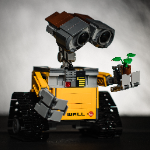在本项目中,我们将深入探讨如何使用OpenCV3和Python进行人脸检测与识别。OpenCV是一个强大的计算机视觉库,广泛应用于图像处理、机器学习和计算机视觉任务。Python作为易读性强且支持众多科学计算库的编程语言,是实现OpenCV算法的理想选择。 人脸检测是计算机视觉领域中的一个基础任务,主要目标是定位图像中的人脸位置。OpenCV提供了一个名为Haar级联分类器的预训练模型,该模型通过一系列特征级联来检测图像中的人脸。在这个项目中,我们将会用到`haarcascade_frontalface_default.xml`这样的级联分类器文件,它包含了大量的正负样本,用于训练模型识别人脸。 人脸检测的步骤如下: 1. 加载预训练的级联分类器。 2. 使用`cv2.CascadeClassifier.detectMultiScale()`函数对图像进行滑动窗口操作,寻找可能包含人脸的区域。 3. 对每个检测到的矩形区域,我们可以进一步确认是否为人脸。 接下来,人脸识别是更复杂的任务,它涉及到从已知的人脸数据库中识别出特定个体。OpenCV提供了EigenFace、FisherFace和LBPH(Local Binary Patterns Histograms)等方法。在这个项目中,我们可能会使用LBPH方法,因为它是相对简单且适用于小规模人脸库的方法。 人脸识别的基本流程如下: 1. 预处理:缩放、灰度化、直方图均衡化等,使得所有图像具有相同的尺寸和光照条件。 2. 训练模型:使用`cv2.face.LBPHFaceRecognizer.create()`创建识别器,然后用`recognizer.train()`方法训练模型,输入为灰度图像和对应的标签(人的名字或其他标识符)。 3. 测试与识别:对于新的未知人脸,应用相同的预处理步骤,然后用`recognizer.predict()`方法进行预测,返回的标签即为识别结果。 在项目源代码中,你将看到如何加载视频文件(例如《欢乐颂》片段),帧帧处理以进行人脸检测和识别。可能还会有一个数据库,存储了已知人物的面部特征和对应的名字,以便在识别过程中进行匹配。 此外,为了优化性能和用户体验,可能还会涉及实时显示检测结果、调整检测阈值以及处理多个人脸等问题。项目代码会包含如何将这些元素整合在一起,形成一个完整的实战系统。 这个项目为你提供了一个实用的起点,帮助你理解和实现基于OpenCV3和Python的人脸检测和识别技术。通过深入研究这个项目,你可以掌握如何运用这些工具解决实际问题,并进一步提升你在计算机视觉领域的技能。
 opencv3+python人脸检测和识别.rar (69个子文件)
opencv3+python人脸检测和识别.rar (69个子文件)  opencv3+python人脸检测和识别- 完整实战项目源代码 识别视频《欢乐颂》中人物
opencv3+python人脸检测和识别- 完整实战项目源代码 识别视频《欢乐颂》中人物  facefs
facefs  data
data  at
at  faceshls.csv 590B
faceshls.csv 590B fs
fs  3.pgm 39KB
3.pgm 39KB 47.pgm 39KB
47.pgm 39KB 9.pgm 39KB
9.pgm 39KB 1.pgm 39KB
1.pgm 39KB 19.pgm 39KB
19.pgm 39KB 6.pgm 39KB
6.pgm 39KB 13.pgm 39KB
13.pgm 39KB 4.pgm 39KB
4.pgm 39KB 28.pgm 39KB
28.pgm 39KB 8.pgm 39KB
8.pgm 39KB 39.pgm 39KB
39.pgm 39KB 32.pgm 39KB
32.pgm 39KB 26.pgm 39KB
26.pgm 39KB 30.pgm 39KB
30.pgm 39KB 31.pgm 39KB
31.pgm 39KB 12.pgm 39KB
12.pgm 39KB 11.pgm 39KB
11.pgm 39KB 18.pgm 39KB
18.pgm 39KB 27.pgm 39KB
27.pgm 39KB 41.pgm 39KB
41.pgm 39KB 38.pgm 39KB
38.pgm 39KB 37.pgm 39KB
37.pgm 39KB 50.pgm 39KB
50.pgm 39KB 25.pgm 39KB
25.pgm 39KB 23.pgm 39KB
23.pgm 39KB 49.pgm 39KB
49.pgm 39KB 36.pgm 39KB
36.pgm 39KB 20.pgm 39KB
20.pgm 39KB 40.pgm 39KB
40.pgm 39KB 15.pgm 39KB
15.pgm 39KB 45.pgm 39KB
45.pgm 39KB 5.pgm 39KB
5.pgm 39KB 46.pgm 39KB
46.pgm 39KB 35.pgm 39KB
35.pgm 39KB 17.pgm 39KB
17.pgm 39KB 0.pgm 39KB
0.pgm 39KB 2.pgm 39KB
2.pgm 39KB 42.pgm 39KB
42.pgm 39KB 7.pgm 39KB
7.pgm 39KB 16.pgm 39KB
16.pgm 39KB 44.pgm 39KB
44.pgm 39KB 24.pgm 39KB
24.pgm 39KB 33.pgm 39KB
33.pgm 39KB 43.pgm 39KB
43.pgm 39KB 34.pgm 39KB
34.pgm 39KB 48.pgm 39KB
48.pgm 39KB 21.pgm 39KB
21.pgm 39KB 22.pgm 39KB
22.pgm 39KB 10.pgm 39KB
10.pgm 39KB 29.pgm 39KB
29.pgm 39KB face_rec.jpg 126KB
face_rec.jpg 126KB cascades
cascades  haarcascade_righteye_2splits.xml 192KB
haarcascade_righteye_2splits.xml 192KB haarcascade_frontalface_default.xml 908KB
haarcascade_frontalface_default.xml 908KB haarcascade_frontalface_alt2.xml 528KB
haarcascade_frontalface_alt2.xml 528KB haarcascade_upperbody.xml 767KB
haarcascade_upperbody.xml 767KB haarcascade_lefteye_2splits.xml 191KB
haarcascade_lefteye_2splits.xml 191KB haarcascade_frontalface_alt.xml 661KB
haarcascade_frontalface_alt.xml 661KB haarcascade_licence_plate_rus_16stages.xml 47KB
haarcascade_licence_plate_rus_16stages.xml 47KB haarcascade_smile.xml 184KB
haarcascade_smile.xml 184KB haarcascade_lowerbody.xml 386KB
haarcascade_lowerbody.xml 386KB haarcascade_profileface.xml 809KB
haarcascade_profileface.xml 809KB haarcascade_eye.xml 333KB
haarcascade_eye.xml 333KB haarcascade_frontalface_alt_tree.xml 2.56MB
haarcascade_frontalface_alt_tree.xml 2.56MB haarcascade_russian_plate_number.xml 74KB
haarcascade_russian_plate_number.xml 74KB haarcascade_fullbody.xml 466KB
haarcascade_fullbody.xml 466KB haarcascade_eye_tree_eyeglasses.xml 588KB
haarcascade_eye_tree_eyeglasses.xml 588KB videohls_rec.py 8KB
videohls_rec.py 8KB 2.mp4 6.64MB
2.mp4 6.64MB- 1

 嵌入式修行僧2019-11-15欢乐颂的人脸识别
嵌入式修行僧2019-11-15欢乐颂的人脸识别 tan_yh2019-05-19原来是分辨欢乐颂那个程序,重复下了
tan_yh2019-05-19原来是分辨欢乐颂那个程序,重复下了 lnk56318342019-03-09ok,very good
lnk56318342019-03-09ok,very good 今池鱼2021-03-07挺好的,蛮清晰
今池鱼2021-03-07挺好的,蛮清晰

- 粉丝: 1
- 资源: 18
 我的内容管理
展开
我的内容管理
展开
 我的资源
快来上传第一个资源
我的资源
快来上传第一个资源
 我的收益 登录查看自己的收益
我的收益 登录查看自己的收益 我的积分
登录查看自己的积分
我的积分
登录查看自己的积分
 我的C币
登录后查看C币余额
我的C币
登录后查看C币余额
 我的收藏
我的收藏  我的下载
我的下载  下载帮助
下载帮助

 前往需求广场,查看用户热搜
前往需求广场,查看用户热搜最新资源
- 基于mmse的不确定电力系统有限次测量的分析估计 源代码, matlab代码按照高水平文章复现,保证正确 大量可再生分布式能源的预期渗透正推动下一代电力系统走向不确定性,这可能对状态估计的可靠性和复杂
- 西南科技大学数据分析期末大作业.zip
- 西门子PLC1200立体库机器人码垛机伺服视觉AGV程序 包括2台西门子PLC1215程序和2台西门子触摸屏TP700程序 PLC和基恩士相机视觉定位Modbus TCP通讯(SCL语言) PLC和A
- 知名扫地机代码方案 某知名大厂扫地机代码 适合需要学习项目与代码规范的工程师 硬件驱动包含 陀螺仪姿态传感器bmi160、电源管理bq24733等 软件驱动包括 IIC、PWM、SPI、多路A
- siddhi-execution-json jar包用于在处理事件中对json字符串进行处理
- 直流充电桩,双枪控制板方案,需要的砸单
- 埃斯顿量产控制器 埃斯顿量产伺服控制器C代码和硬件图纸 1)TMS320F28335+FPGA全套代码;全C写的DSP代码,VHDL写的FPGA代码(Lattice MXO1200) 2)AD电
- 信捷XC PLC与西门子V20变频器通讯程序 原创可直接用于生产的程序,程序带注释,并附送触摸屏程序,有接线方式和设置,通讯地址说明等 程序采用轮询,可靠稳定 器件:信捷XC3的PLC,西门子V20
- 台达DVP ES系列PLC与3台英威腾GD变频器通讯 程序带注释,并附送昆仑通态和威纶通触摸屏程序,有接线方式,设置 器件:台达DVP ES系列的PLC,3台英威腾GD系列变频器,昆仑通态,威纶通触
- 控制系统的数学建模,被控对象的数学模型建立,simulink模型实现 提供四旋翼和带尾翼直升机,共轴式直升机的数学模型、simulink模型,推导 提供资料,文献 刚体飞行动力学模型,运动学模型
- 深度学习中的Fashion-MNIST数据集与卷积神经网络实现及其训练分析
- MPC控制器设计,模型预测控制,线性时变模型预测控制,LTV MPC,提供理论讲解与应用实现 提供MPC算法、LTV MPC 算法在直升机和四旋翼中的应用实例 提供模型预测控制资料 提供matl
- Flink Forward Asia 2024 上海站(脱敏)PPT合集.zip
- Node.js安装与环境配置指南:覆盖Windows、macOS及Linux系统全流程
- 微信小程序开发全流程详解:从准备到发布的全面指南与关键技术解析
- 斑马打印机C#控制程序源代码,适合自己进行二次开发 文档齐全,包括驱动程序和如何设置斑马打印机的说明文档 源代码可以打印条形码标签和二维码标签


 信息提交成功
信息提交成功